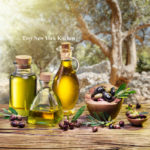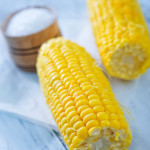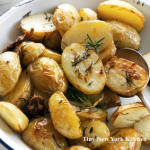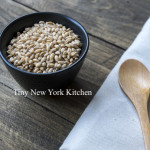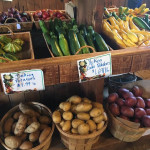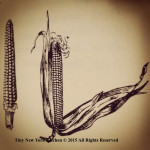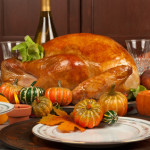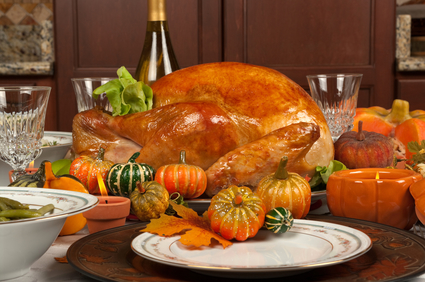Extra Virgin Olive Oil, Coconut Oil, Butter, Avocado Oil, Sesame Oil, and Walnut Oil are the fats that you should be cooking with. Try to avoid Canola, Soybean, Corn, Peanut, Sunflower, Safflower, Cottonseed, and Grapeseed Oil as they go through intense processing.
Extra Virgin Olive Oil
The benefits of this mainly monounsaturated, anti-inflammatory and antibacterial, protects against heart disease and raises HDL cholesterol. It has a medium smoke point (the heat at which an oil starts to degrade), so it’s fine for sautéing, but not for cooking at very high temperatures. It excels in sauces and salad dressings.
Coconut Oil
While coconut oil is saturated, it’s a type that operates differently in your body than animal based saturated fats. It also may have special benefits. It boosts fat burning and contains medium chain triglycerides (MCTs), which go straight to the liver to be used as a quick source of energy or turned into ketones.
Butter
Now that margarine has been banished to the neverland of trans fats, butter has made a slow and steady comeback. Butter can create magic in cooking and is completely keto friendly. But it has a low smoke point, so if you want to cook at higher heats, use ghee (clarified butter) instead. You can purchase ghee or make your own.
Avocado Oil
Whole avocados are keto gold and the oil pressed from the fruit is equally healthful. It’s also incredibly versatile, with just about the highest smoke point of any oil (520 degrees) meaning that you can cook at very high heat without having it break down or burn.
Sesame Oil
Sesame seeds have been pressed to extract their oils for thousands of years. They bring a distinctive flavor, particularly savory in Asian inspired dishes, along with hefty omega-3 values and compounds called phytosterols that reduce cholesterol uptake in the body.
Walnut Oil
Walnuts are stars of a keto diet, and so is the oil they provide, which is rich in omega-3 fatty acids as well as vitamins like manganese, niacin, potassium, and zinc. It doesn’t cook well at high heat. Its rich, nutty flavor is better served as a star ingredient in sauces, salad dressings or toppings for grilled meats.
“Work With What You Got!”
©Tiny New York Kitchen © 2021 All Rights Reserved
As much as I love this hand-held summer superstar teamed or grilled, a little effort goes a long way in creating a more substantial summer side. I love cutting corn right off the cob, getting chunky clumps of corn kernels that I then lightly sauté – this brings out a bold sweetness. Sautéing tends to brighten the corn, and it holds up well on its own or tossed with other ingredients.
Please don’t open any ear of corn at the market looking for perfection. You can feel if it is a big intact fat ear. Corn holds up best cold and in its own packaging, the husk.
As soon as corn begins to warm, the sugars break down and corn gets starchy. Tearing it open exposes and warms the cob, and you’re ruining it for everyone.
To slice, hold the pointed stalk end in your hand like a handle, with the flat end on a clean cutting surface. Slice corn off the cob starting about halfway down, holding firmly running a knife down the cob. Go around the cob, then turn over to get the other half.
When sautéing, do not overcook. As soon as the corn darkens from its yellow-milky tone to a darker shiny kernel it is done. Remove from heat and to stop the cooking process, spread out on a sheet pan, and refrigerate just to cool.
“Work With What You Got!”
©Tiny New York Kitchen © 2019 All Rights Reserved
I don’t know what’s more comforting than potatoes. A staple food in many parts of the world, potatoes are an integral part of much of the world’s food supply. Potatoes are the world’s fourth-largest food crop after maize, wheat, and rice.
There are currently over 1,000 different types of potatoes.
White Potatoes: These all-purpose potatoes are moderately starchy with a dense, creamy texture and can be roasted, baked, boiled, or steamed.
Russet Potatoes: Starchy and fluffy, these potatoes are ideal for mashing and baking, as well as French fries and latkes.
Fingerling Potatoes: Small, knobby fingerlings have thin, delicate skin that doesn’t need to be peeled. Their firm texture stands up to roasting, boiling, and pan-frying.
Baby Potatoes: Also known as new potatoes, these tiny potatoes come in a rainbow of colors (another reason to leave the skin on). They are best cooked whole and boiled, steamed, or roasted.
Gold Potatoes: These thin-skinned potatoes (also called yellow potatoes) are beloved for their buttery flesh. They’re fluffy enough to be smashed yet firm enough to be used in soup or stew.
Red Potatoes: Ruby skin gives these potatoes visual appeal, and their firm and waxy texture means they soak up flavor without turning too soft. They are ideal for salads and gratins.
Look for potatoes without any bruises, cuts, wrinkles, or soft spots, which can all be signs of age or poor handling. If they smell like soil, that’s typically an indication of freshness. While fresh is best, potatoes keep for quite some time. Store them in a spot that’s cool, dark, and dry. If eyes sprout, simply cut them off and use the potatoes as normal. Potatoes provide vitamins C and B6, plus iron and potassium. While the whole potato contains fiber, you will get an extra boost if you leave the skin on.
“Work With What You Got!”
©Tiny New York Kitchen © 2019 All Rights Reserved
Corn kernels contain a small drop of water that is stored inside a circle of soft starch. The soft starch is surrounded by the kernel’s hard outer surface. As the kernel heats up, the water begins to expand, and pressure builds against the hard starch. When this hard surface gives way, the popcorn explodes. As it explodes, the soft starch inside the popcorn inflates and bursts, turning the kernel inside out.
“Work With What You Got!”
© Victoria Hart Glavin Tiny New York Kitchen © 2017 All Rights Reserved
September
September is a wonderful time for enjoying the beautiful array at local farmers’ markets. September is a delightful time for gathering ingredients that will showcase fleeting flavors of summer. A walk among colorful baskets filled with fresh produce is incredibly inspiration.
Blazing scarlet tomatoes, sun-sweetened and fattened from their time on the vine, are joined by zesty green, bright yellow, and almost purple-colored varieties. Turn this beautiful rainbow into a final summer tomato salad by simply cutting thick slices of each colorful variety of tomato, and arranging them on a big platter. Drizzle the slices with olive oil and balsamic vinegar, sprinkle with a bit of sea salt, and finish the dish with finely minced basil.
Fill your shopping cart with crisp cucumbers, glossy purple or creamy white eggplant, pale green or buttery yellow summer squashes, string or wax beans, spicy jalapeno peppers, fragrant peaches, lush melons, sugary corn on the cob and great bunches of finely scented fresh herbs.
As September evenings grow quietly cooler, take pleasure in preparing dishes that feature these ingredients, such as nutmeg-scented roasted peaches, a delectable eggplant parmesan, velvety corn soup, garlic string beans or summer squash stuffed with ground lamb or turkey, breadcrumbs, fresh basil, oregano and parsley, cinnamon and bit of cheese. Cucumbers can be turned into simple refrigerator pickles, jalapeños can be roasted on the grill and packed away in the freezer, ensuring that a bit of summer will still be served as the season marches on.
There is also a hint of fall to be found at the farmers’ market. While all of the summer crops are still available to be savored, the new season is sneaking in. Freshly dug potatoes, dark purple plums, crisp early apples, succulent pears, Brussels sprouts, earthy mushrooms, carrots, cauliflower and kale will provide culinary creativity for weeks to come.
Cooking and eating with the seasons is the most excellent and efficient way to introduce high quality nutrients into the body. When we enjoy what nature has prepared for us, we are giving our bodies the gift of exceptionally luscious flavor, along with important healing properties. I can’t think of a better way to prepare a delicious life.
www.tinynewyorkkitchen.com
“Work With What You Got!”
© Victoria Hart Glavin Tiny New York Kitchen © 2016 All Rights Reserved
Nebraska Corn
Growing up in Nebraska corn was a nightly summer menu item. The corn plant is Native American in origin and Nebraska is corn country. Driving through the state, one will see endless fields of sweet corn, feed corn, and pop corn. Small plot gardeners know that corn takes up a lot of space as it is greedy for soil nutrients, prone to weeds and disease, destroyed by small animals, wind and frost. So then why do we go through all the trouble of growing corn? Because no corn is as fresh and sweet as the corn you grow yourself.
The period of peak freshness for sweet corn is measured in minutes, not hours or days. The best corn is simply the freshest corn. Proper timing for harvest is crucial to the quality of sweet corn. Harvest sweet corn when the ears are full and blunt at the tip. The husks should be tightly folded and green. Using your thumbnail, poke and end kernel. It should squirt a milky white sap. Under ripe corn will contain a watery liquid. Overripe corn will have a tough skinned kernel with doughy interiors. Also look at the silk, which should be turning brown and dry on the end.
Storing sweet corn for long periods of time will destroy it. The sugar quickly turns to starch, losing flavor, quality, and most of all sweetness. If you must store sweet corn, use perforated plastic bags and get it into the refrigerator as soon as possible. Warm temperatures hasten the conversion process. Try to use the corn within 1 to 2 days and DO NOT husk until just prior to cooking.
“Work With What You Got!”
© Victoria Hart Glavin Tiny New York Kitchen © 2015 All Rights Reserved
 Constitution Week – Foods of Our Forefathers Part III
Constitution Week – Foods of Our Forefathers Part III
The abundance of meat in America was a major change in the diet of the early settlers. Rabbits and squirrels were available year-round nearly everywhere, plus deer and other large game in many regions. As settlers moved west, buffalo gained importance in the diet. Fish, shellfish and wild fowl became common food, and they were all essentially “free.” The existence of these various forms of game was a literal life saver in times of uncertain crops and unbroken land. The game gradually diminished, of course, as the population expanded and settlers pushed west, but it provided a large share of the diet in early and frontier days.
Ham, of course, appeared on almost every settler’s table, rich or poor. It might be the only meat served at a meal or it might appear in company with more exotic roasts and fowl, but it was always there – breakfast, dinner and supper.
Corn was also a staple of the colonists, either fresh in summer, or as hominy or corn meal all year. Corn was also put to another use by an early Virginian, Captain George Thorpe, who may have been the first food technologist in America as he invented Bourbon whiskey shortly before he was massacred by the Indians in 1622.
Meal patterns for working people in rural early America were very different from those common today. Breakfast was usually early and light which consisted of bread, hominy grits, and sometimes fruit in season. Coffee, which was a new beverage at the time, was popular that is if it was available. A drink made from caramelized grain was sometimes substituted. Chicory was popular in the South, either alone or used to stretch the coffee. Tea was often made from local leaves such as sage, raspberry or dittany. Alcohol in some form was often served.
Breakfast in more elegant homes or large plantations might be later in the morning, and include thinly sliced roast and ham.
Dinner was served somewhere between midday and midafternoon, depending on the family’s circumstances, and was the big meal of the day. There was almost always ham, as well as greens (called sallat), cabbage and other vegetables. In the proper season, special dainties would appear – fresh fruits and berries, or fresh meat at appropriate butchering times.
Desserts could be simple such as a scooped out pumpkin, baked until done and then filled with milk, to be eaten right out of the shell. Or dessert could be more complex such as ice cream or other fruit flavored frozen pudding or a blanc mange. Blanc mange was prepared from milk and loaf sugar, flavored with a tablespoon or two of rosewater, thickened with a solution of isinglass (derived from fish bladder, soaked overnight in boiling water). This mixture was boiled for 15 to 20 minutes, then poured into molds to set.
If isinglass was not available (most was imported from England), homemade calves foot jelly could be substituted, but eh dessert was not as fine.
Various alcoholic beverages, including wines, applejack, “perry” (hard cider made from pears), or beer were commonly consumed.
In winter, peaches and other fruit disappeared from the dinner table, to be replaced by dishes made from stored apples and dried fruit of various sorts. Soups or broths also took their place. Milk grew scarce as cows “dried up” in the short days. Vegetables gradually decreased in variety as stored crops wilted.
Apples quickly became a staple in early America. Orchards were easy to start, required a minimum of care, and apples stored well. Housewives devised a multitude of “receipts,” including sauces and butters for off-season, as well as many using dried apples.
Supper was late and a light bread and butter, some of the left-over roast from dinner, fruit (fresh if in season, pickled and spiced otherwise), and coffee or tea.
To Be Continued…

